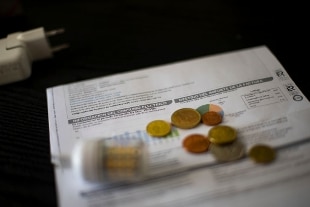Kremlin: Nord Stream 2 pipeline will rebalance gas prices
Expensive bills: why will prices rise?
Methane, record increases: expected sting on bills
Electricity bill, Cingolani: "40% increase in the next quarter"
Share
15 September 2021 The Spanish nuclear energy sector is on a war footing with the center-left government of the Iberian country: the main reason is one of the latest measures adopted by the executive, grappling with an emergency situation for a record increase in electricity prices and which is trying to contain the impact on the energy costs of households and businesses with various measures.
The measure in question, a bill to be approved in Parliament, aims to reduce the so-called "benefits fallen from the sky", obtained by energy producers with low CO2 emissions (such as nuclear power plants) which - due to mechanisms on the market - they manage to sell it at similar prices compared to those who have to pay the European CO2 emission rights, thus obtaining greater profits.
This initiative has put the main companies in the sector in Spain on a war footing, including large electricity companies such as Endesa and Iberdrola: a statement from the organization that groups them, the Foro Nucleare, argues that, with the new law, they would be forced to close the active plants in Spain early due to the unsustainability of costs. There are currently seven plants in operation in the Iberian country.
The current concessions will expire between 2027 and 2035, recalls the daily El País, which also reports that any stop of the plants cannot be decided unilaterally by the owners because the authorization of the government and the market regulator is required. Sources in the executive responded to the sector stating that the planned measures are "in accordance with national and European law", according to Spanish public television Tve.
Electricity price up to 15 euros in one day
Meanwhile, the price of electricity recorded another spectacular increase and on Thursday will reach 188.18 euros per megawatt hour (MWh), crushing the previous all-time high, 172.12 on Wednesday. The maximum price, which will take place between 22:00 and 23:00, is close to 200 euros (198.85) and the minimum will reach 180 euros between four and seven in the morning.
The energy crisis is already causing a social alarm due to the increase in the electricity bill, which in August cost 35% more than in the same month last year. Fluctuations in the daily price affect consumers covered by the regulated tariff (PVPC), about 10.5 million, while those who are in the free market are exempt, but only for the moment (about 17 million.
Given the situation, which affects the whole of Europe, the High Representative for Foreign Policy of the European Union and Vice-President of the Commission, Josep Borrell, urged this Wednesday to reform the European electricity price system, "because it has too many malfunctions". "The transfer of the cost of gas to other energies whose production cost has nothing to do with the price of gas is something that has no clear economic justification," he stressed.
Nuclear power in the European Union
Nuclear power plants now produce about a quarter of the electricity consumed in the European Union. According to Eurostat data, in 2019, 13 EU Member States had a total of 106 nuclear reactors in operation, producing 765 337 GWh of electricity, or around 26% of total electricity production in the EU.
The largest nuclear energy producer in the EU was France with 399,011 GWh (52.1% of the EU total), followed by Germany (75 071 GWh or 9.8%), Sweden (66130 GWh or 8.6 %) and Spain (58,349 GWh or 7.6%). These four countries together accounted for more than three-quarters of the total amount of electricity generated at nuclear power plants in the EU.
In Europe there are 14 countries in which there are no active nuclear power plants: Denmark, Estonia, Ireland, Greece, Croatia, Italy, Cyprus, Latvia, Lithuania, Luxembourg, Malta, Austria, Poland, Portugal. Thirteen European power plants are located less than 200 kilometers from our borders. The Italian provinces exposed to the greatest risk, according to the National Agency for Environmental Protection, are Cuneo, Turin, Aosta, Varese, Sondrio, Bolzano, Udine and Trieste.
According to the International Energy Agency, nuclear power generation is set to increase by more than 2% in 2021, mainly due to higher electricity demand in France and a new reactor in Slovakia, but this increase is insufficient. offset the decline in 2020. According to the Agency's data, at the end of 2016, a total of 185 European nuclear power plants were in operation (of which 128 in the European Union) and produced a total of 119 billion Watts (GWe) of nuclear power, but over half of these came from the 58 French power plants. Emmanuel Macron confirmed his commitment to decrease French dependence on nuclear energy.
Another 56 nuclear power plants were then operating in non-European states (Russia, Ukraine and Switzerland) and brought within the Union as much as 17% of our electricity needs. In Great Britain there were 15 nuclear power plants in operation which provided 7% of the nuclear energy produced. Germany, which in 2016 contributed 9% with 8 plants, has planned to dismantle everything by 2022. Both Spain and Belgium were active 7 plants.

